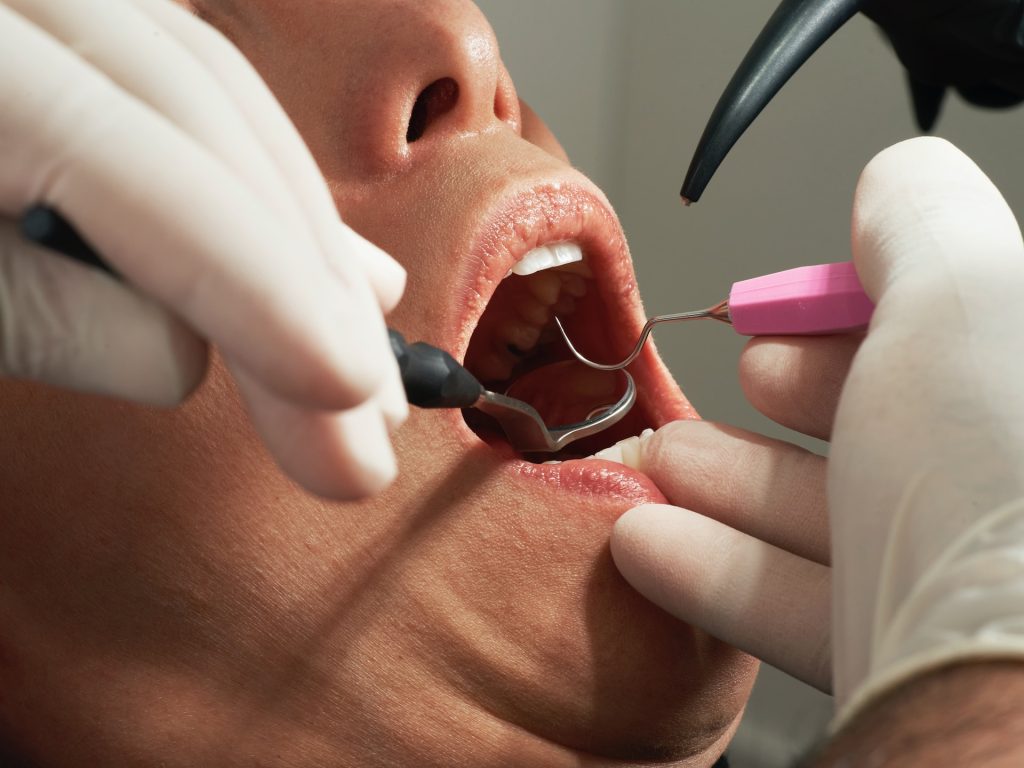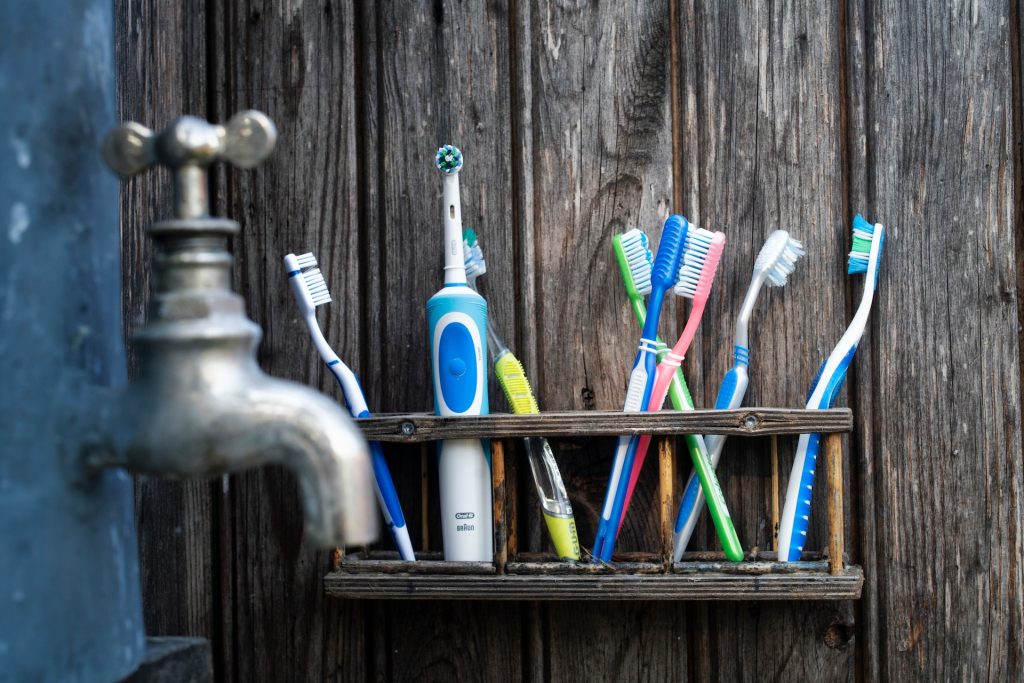If there was a treatment to attain whiter teeth and a better smile, it would be veneered. Dental veneers (also known as dental laminates) are thin, tooth-colored shells. They are bonded to the surface of teeth to improve their appearance. They are similar to the contact lens worn on eyes. However, they cannot be removed every day as it is bonded to the tooth structure permanently.
Types of Dental Veneers:
Veneers are generally made of a variety of materials. They serve different purposes.
1) Porcelain veneers: It is the most commonly used high-quality veneer that is used for a natural look. Porcelain veneers preserve the bulk of the original tooth structure and are a time-tested procedure. The procedure can be completed within 2-3 dental visits. Once the veneers are fabricated in the lab, they can be attached to the teeth with cement.
2) Ceramic veneers (Stacked and Pressed Ceramic): Ceramic veneers are relatively more aesthetic than porcelain veneers. The pressed ceramic veneers are thicker than the other type of veneers, and the stacked ceramic veneers are more aesthetically pleasing. The durability of ceramic veneers is less than porcelain veneers.
3) Lithium Disilicate: This type of veneer is newer. Due to its mechanical strength and durability, it is suitable for people with bruxism (tooth grinding). These veneers are created using computer-aided technology.
4) Zirconia veneers: zirconia-based dental veneers are advised for those with structurally weak teeth. These veneers are popular for their property of fracture resistance. Also, zirconia provides very good aesthetics.
5) No-prep veneers: Unlike traditional veneers, these veneers do not need the tooth surface to be trimmed or prepped or require very minimal preparation. These veneers are adhesively bonded to the tooth structure. Patients undergoing a minimal preparation veneer procedure – such as for Lumineers, Durathin veneers, and Vivaneeers – require no or minimal preparation of the teeth (mostly restricted to the enamel).
Composite Vs Porcelain veneers:
- Porcelain veneers mimic natural tooth structure efficiently as it reflects light just as the enamel of the teeth. Porcelain veneers do not get stained easily.
- Resin veneers are comparatively cheaper than porcelain ones. However, they may get easily stained over time.
- Porcelain veneers can be prepared only in the lab and require a longer time for the completion of treatment. However, composite veneers can be prepared chair-side, thus, reducing the treatment time.
- Composite veneers must be polished to attain a tooth-like finish. Whereas, the porcelain veneers do not require any polishing as they are fabricated to replicate the original tooth.
- Composite veneers can be removed, unlike porcelain veneers.
- Porcelain veneers can be used for almost all kinds of issues including genetic defects. Composite veneers cannot be used for severely discolored teeth and spacing between the teeth.
Uses of Veneers:
Veneers play a major role in treating many aesthetic concerns such as discolored teeth, chipped/broken teeth, uneven or irregularly shaped teeth. They can also be used for correcting the gap between the teeth or to change the shape of the teeth.
Smile design:
Smile design is a cosmetic dentistry concept. When perfect harmony is achieved between the facial components and dental components, a perfect smile can be designed. The dentist considers various features of your face as well as dental structures (such as shape and size of the face and teeth, interpupillary line, dental midline, and lips) while planning an aesthetic treatment. Any abnormalities in the facial components must be corrected before changing the dental components.
Veneers are also fabricated by analyzing these factors, keeping into account any personal preference of the patient. Veneers can be used to correct a single tooth or many. Six to eight teeth in the front are provided with veneers to change the color and shape of the teeth to achieve a symmetrical smile.
Diagnosis and treatment planning:
In the preliminary visit, the patient’s expectation from the treatment is discussed and the different options of veneers are discussed based on the requirement of the patient. Also, the patient’s oral health is assessed. The teeth that require veneers are checked for decay, gum issues, or if the patient requires orthodontic treatment.
Once such requirements are taken care of, the next stage involves the fabrication of the veneers. In the next appointment, the teeth are cleaned, polished, and trimmed. About half a millimeter of the teeth surface is reduced. The trimmed surface is then etched and the custom-made veneers are bonded with cement permanently.
Veneers are a very good alternative for crowns as it does not need extensive cutting of the original tooth structure. Also, the gum tissue easily tolerates veneers.
However, veneers cover the discolored teeth and provide whiter teeth, improving the appearance of the smile.
Veneers are not advisable for the following:
- Patients with poor oral health, such as active gum issues or grossly decayed teeth may not be a good candidate for veneers.
- Fractured tooth, any tooth with a large filling may also not provide the desired support for the veneers.
- Patients with very little enamel. Those with inadequate enamel may already have sensitivity issues. They would be better off without veneers as veneers may increase the sensitivity of the teeth.
- Patients with bruxism (those who clench/grind their teeth).
- Patients looking for temporary whitening of teeth. Veneers are an irreversible procedure. Once placed on the teeth, they cannot be removed.
How to care for veneers after the treatment?
- Follow the general oral hygiene practices. Brushing, flossing, and using mouthwash can be continued as usual.
- Do not bite using your front teeth.
- Use only the back teeth for biting and chewing. Cut up large bites of food to small ones to facilitate chewing only from the posterior teeth.
- Try to limit the consumption of foods that cause stains.
Longevity and Cost factor:
Dental veneers are not a permanent solution to improve the smile of a patient. Therefore, they usually last for about 10-15 years. Their cost varies based on the material of the veneer. Composite veneers are relatively inexpensive.
In conclusion, discuss with your dentist the types of veneers available, your aesthetic concern, and your budget. Although veneers are known as “instant-orthodontics” and are an easier option to correct crooked teeth, it cannot be used to correct severe cases. Therefore, consultation with your dentist will help you decide the right treatment option.
Looking for dental care? Ivory Smiles Dental Clinic is the best dental clinic in HSR Layout & Whitefield Bangalore. You can conveniently book your dentist appointment online or visit our clinic. We’re here to provide you with expert care and a healthy smile. Schedule your visit today! To make an appointment Click Here

